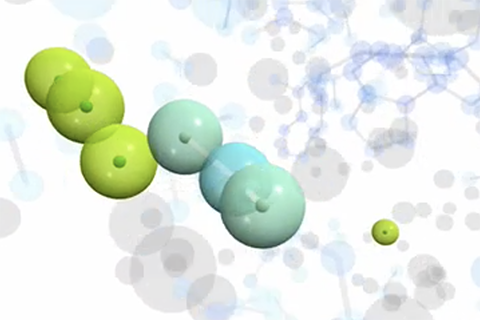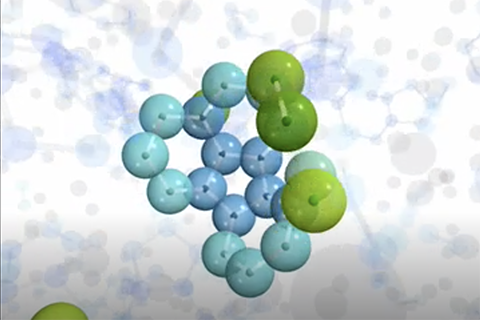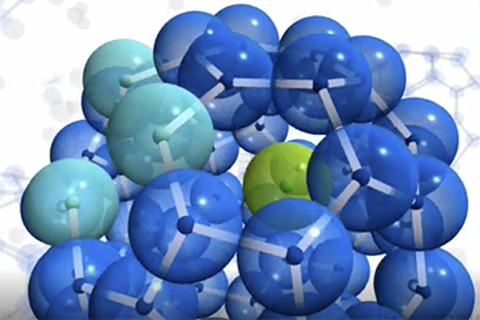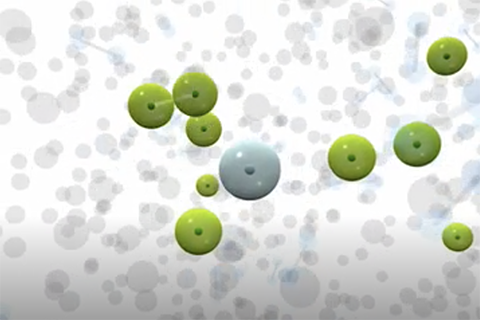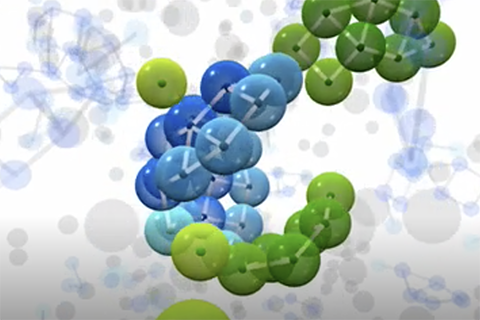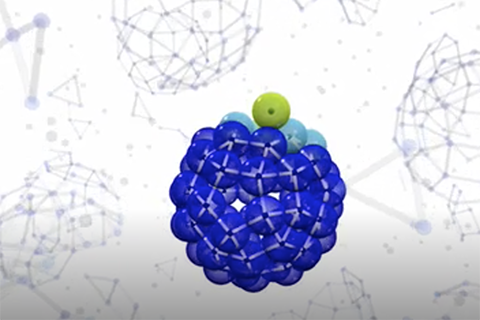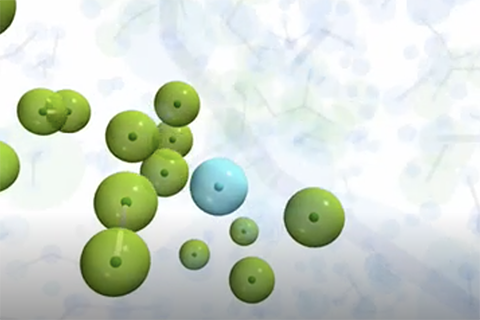Animations From Assembly Trajectories
Animations from selected dynamical simulation trajectories at different parameter values can be seen by clicking below. Please see Ref. [2] for a description of subunit geometries and definitions of parameters.
Successful assembly for subunit geometry B3. Note the frequency of unbinding events — only the most favorable assembly pathways lead to capsid growth.
Parameters: C0=0.11, εb=16.0, θm=0.5
- Formation of nucleus
- Growth of nucleus
- Complete Capsid
Unsuccessful assembly for subunit geometry B3 — a kinetic trap:
Parameters: C0=0.11, εb=20.0, θm=1.5
- Malformed assembly
Successful assembly for subunit geometry B4. Note the events in which different intermediates bind to each other in "Growth of nucleus".
Parameters: C0=0.11, εb=12.7, θm=0.5
- Formation of nucleus
- Growth of nucleus
- Penultimate subunit
Successful assembly for subunit geometry B5. Note that assembly occurs primarily through binding of monomers.
(Movies were made from typical simulation trajectories. The rendering was done by Stylus Visuals.)
More About Space-Time Analysis of Assembly Trajectories
